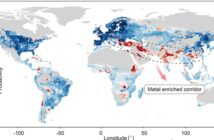A critical gene that leads to the synthesis of a protein known as Knr4 could be the key to what makes some fungal pathogens so virulent. Focusing prevention strategies on disabling or modifying this gene or the protein it encodes for, could provide new pathways for disease control.
In a newly published study, scientists at Rothamsted Research, in partnership with the University of Bath and the University of Exeter, used combined pathogen host modelling to map the cereal disease Fusarium interaction for the first time. This modelling looks at the genes that are active during infection and traces them to proteins that drive infection.
Starting with a genome of over 14,000 genes, this targeted approach identified the protein Knr4 as a critical driver of infection for Fusarium Head Blight (FHB) and Septoria tritici – two of the most common diseases of wheat. Knr4 is involved in regulating growth rate and sensitivity to stress, and appears to be necessary for full Fusarium virulence.
Knocking the gene out in Fusarium saw a complete inability of the pathogen to spread in the wheat spike and a similar deletion also resulted in a drop in virulence of Septoria.
“This protein is only found in fungi, not in plants or animals,” says Dr Erika Kroll, who led the study. “This means that if we target Knr4, we may be able to reduce the infectivity of pathogenic fungi without harming the wheat crop, ourselves, or other animals. This could be a game-changer for controlling these serious pathogens.”
Erika believes that this gene discovery approach is best thought of as exploring a city map, where roads connect key locations like houses, stores, workplaces and recreation areas. In a biological network, the connections represent interactions between genes. Just as some intersections in a city are critical for traffic flow, certain genes serve as crucial “hubs” in the fungal network. If one of these essential genes is disrupted, such as Knr4, the network collapses, halting the fungus’s ability to survive and spread.
The five highest global contributors to wheat yield and quality losses are all fungal and include FHB and Septoria tritici which each account for around 2-3% of wheat losses globally. With mounting challenges in fungal control and increasing restrictions on fungicide use due to environmental concerns, there is an urgent need for innovative control strategies.
This could be achieved through the development of chemical fungicides that disrupt the protein’s function or through the application of RNA interference techniques that would reduce fungal gene expression. Stricter regulation of fungicides is contributing to growing pathogen resistance as fewer chemicals can be used for control.
“There is a pressing need to identify new target sites for control. This research not only advances our understanding of mechanisms required for full fungal virulence but also offers promising directions for the development of effective strategies for disease control in agriculture,” adds Erika.




